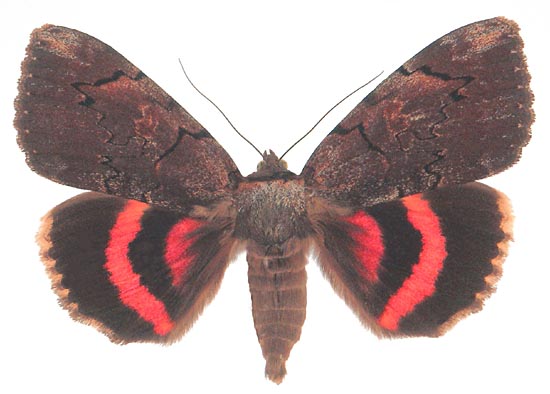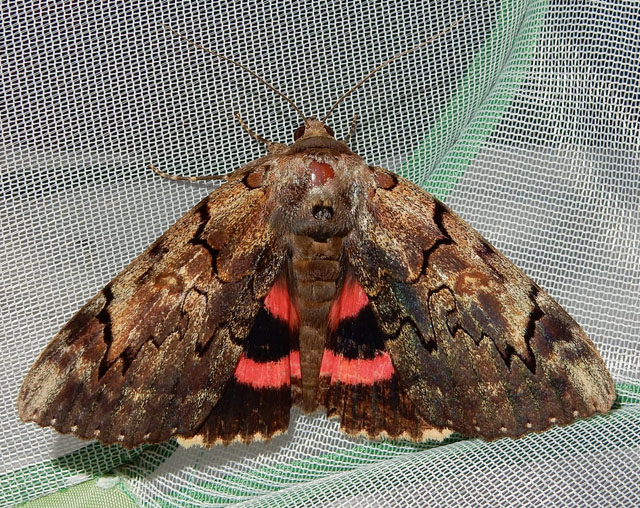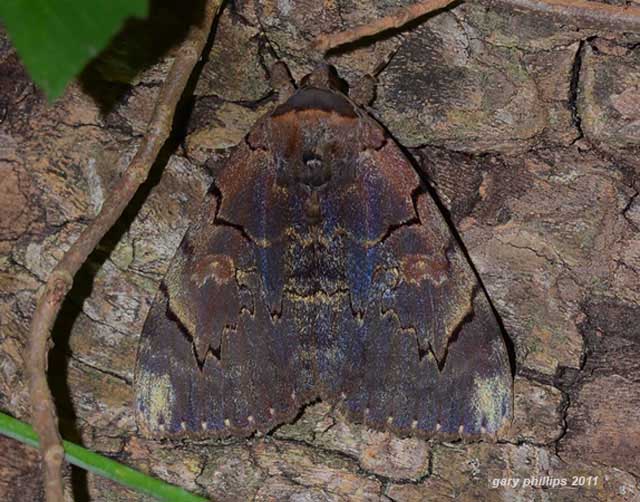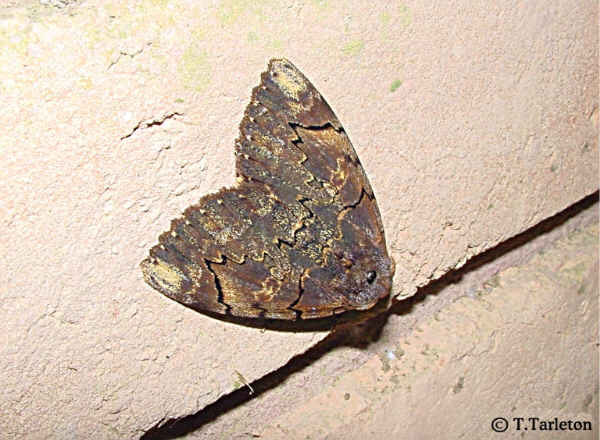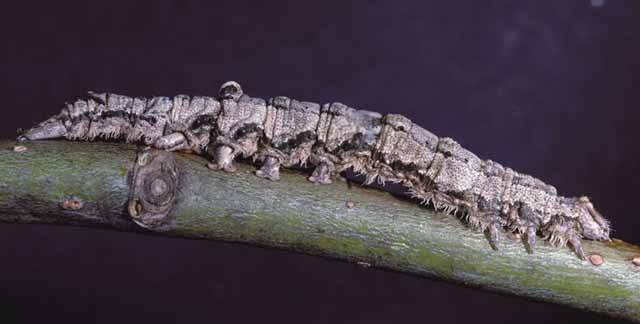DISTRIBUTION:Catocala carissima
(wingspan: 70-85mm) flies from Tennessee (WAM), south to
Georgia
and Florida (RG), west to
Louisiana (TT/VAB) and
Texas.
This species was formerly treated as a subspecies of Catocala cara,
but it has been elevated to full species status.
Catocala carissima has also been reported in
Alabama,
Arkansas,
Connecticut,
Delaware,
District of Columbia,
Illinois,
Indiana,
Kansas,
Kentucky,
Maryland,
Mississippi,
Missouri,
New Jersey,
New York,
North Carolina,
Oklahoma and
South Carolina: Horry County (GP).
I suspect it is also present in states surrounded by the states listed above.
There is a distinct light grey brown area at the forewing apex, preceded just inside the postmedial line
by a similar but slightly darker patch. The antemedial and post medial lines are sharp and dark.
The inner black band of the hindwing is wide and complete and merges
with extensive grey-black scaling along the inner margin. The hindwing fringe is cream coloured.
Images to the right courtesy of James K. Adams. |
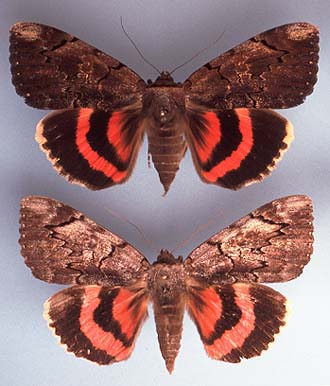
|
